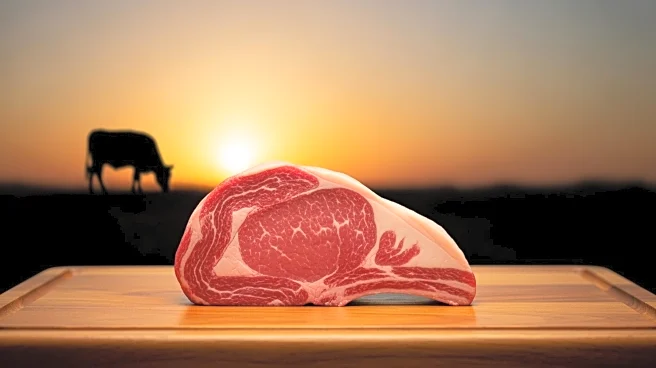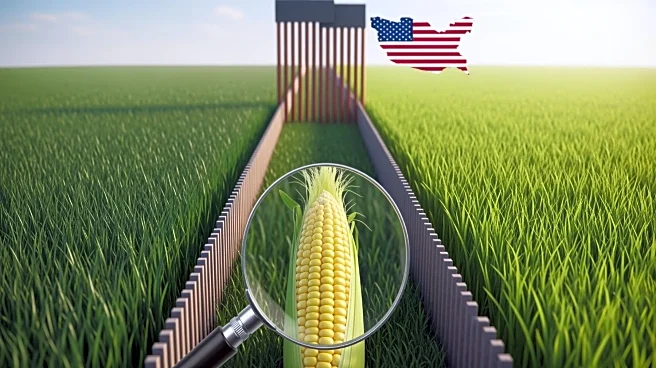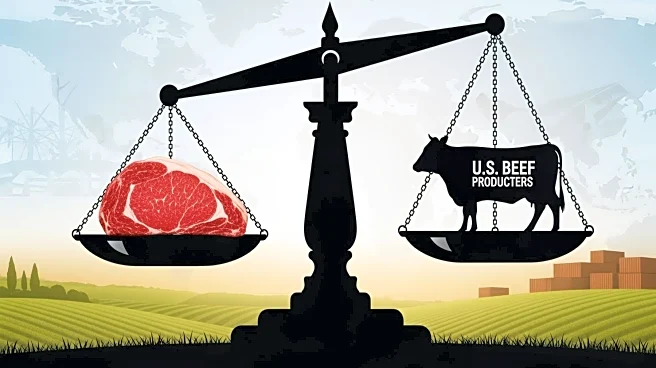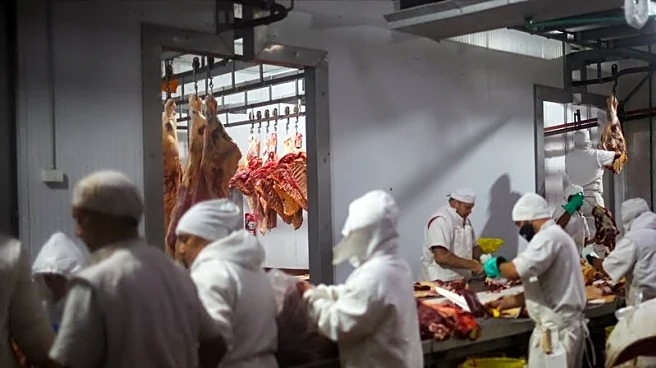What's Happening?
Beef prices in the United States have increased significantly, rising four times as much as overall inflation. This surge is attributed to potential competition from Argentina, which is expected to impact
U.S. cattle ranchers. President Trump has proposed a plan aimed at reducing these prices, although it has met with disapproval from ranchers. The plan's specifics were not detailed in the source, but the discontent among ranchers suggests concerns over its implications for their industry.
Why It's Important?
The rising beef prices are a critical issue for both consumers and the agricultural sector. For consumers, higher beef prices mean increased grocery bills, affecting household budgets. For U.S. cattle ranchers, the potential competition from Argentina could lead to market shifts, impacting their profitability and sustainability. The disapproval of President Trump's plan by ranchers indicates potential challenges in policy acceptance and implementation, which could affect the agricultural economy and trade relations.
What's Next?
The next steps involve monitoring the impact of President Trump's plan on beef prices and the response from the ranching community. Stakeholders, including policymakers and industry leaders, may need to engage in discussions to address ranchers' concerns and explore alternative solutions. Additionally, the potential entry of Argentine beef into the U.S. market could prompt trade negotiations and adjustments in import policies.
Beyond the Headlines
The situation highlights broader issues in agricultural policy and international trade. Ethical considerations regarding competition and market fairness may arise, as well as discussions on sustainable farming practices. Long-term shifts in consumer preferences and dietary habits could also be influenced by price changes and availability of beef products.












